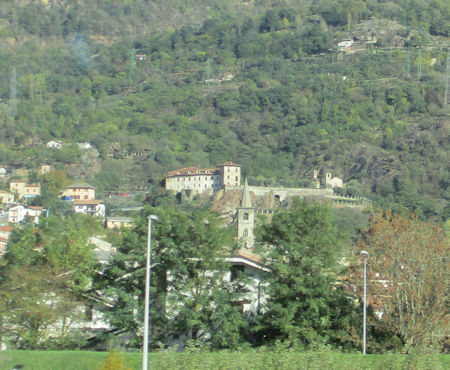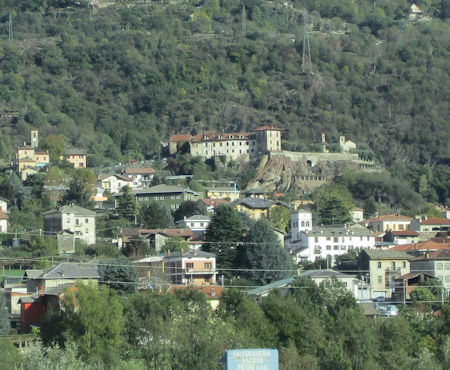You may not find this terribly rewarding unless you're included here, so this is a good time for casual and random browsers to turn back before they get too caught up in the sweep and majesty of the proceedings and can't let go.
2 November 2018
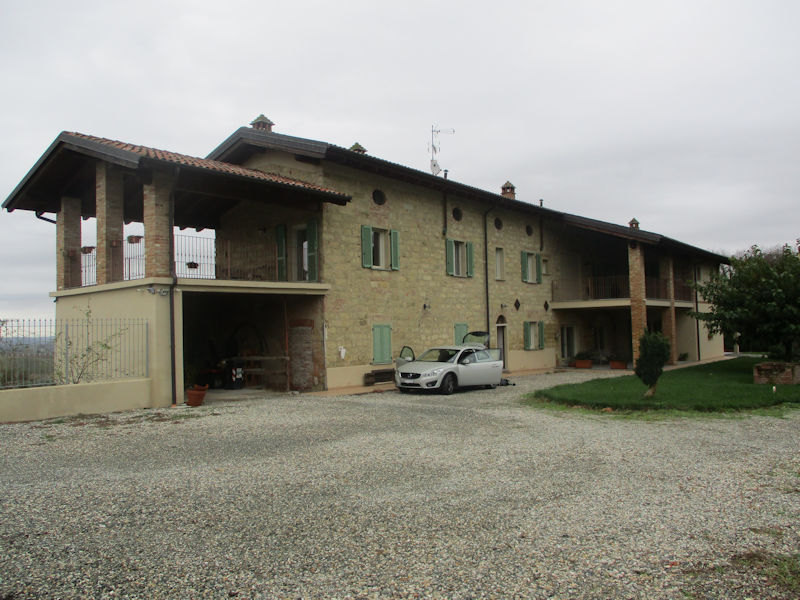
Reluctantly leaving the B+B La Casa nel Vento just outside of Vignale Monferrato in the province of Alessandria in the Italian region of Piedmont, 15km south of Casale Monferrato, at one time the capital of the historic marquisate and then duchy of Monferrato.

Settling up the modest price of the accommodations

The breakfast room
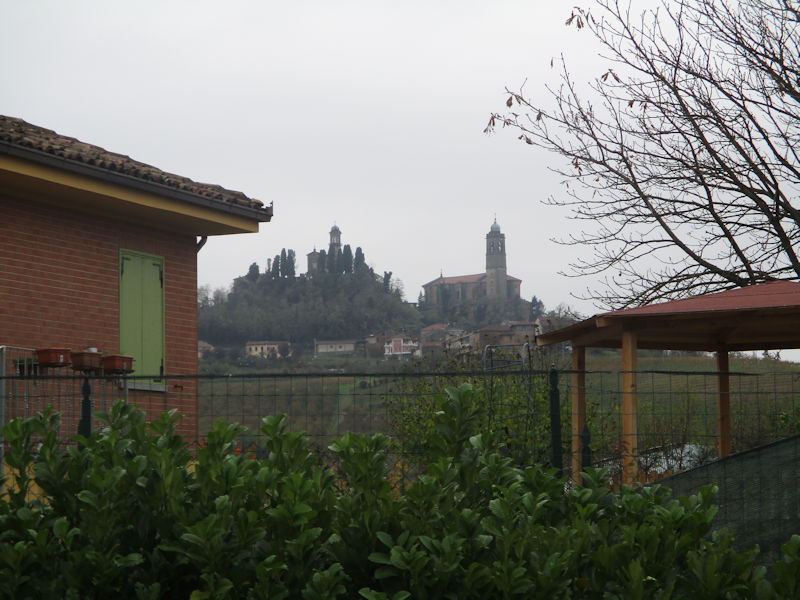
Vignale Monferrato from the Casa nel Vento on a dreary day

We're off for home, southeastward to join the autostrada at Alessandria.

Through Quargnento, passing the Basilica di San Dalmazio, first consecretated in 1111 and dedicated to St Dalmazzo of Pedona, supposedly martyred in 254, whose relics are preserved here.

Northward on the autostrada, the Alps are coming into view.
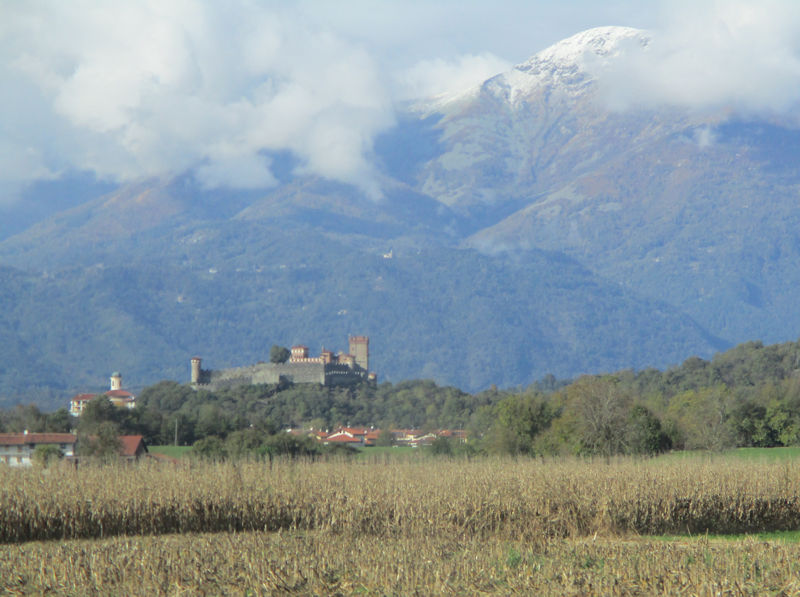
Just south of Ivrea, that's the southern view of the Castello di Pavone, a high-end hotel, restaurant, and convention centre, a good landmark for starting up the Val d'Aosta into the Alps.

The Castello di Pavone from the western side, starting up the Aosta Valley
Two views of the B+B L'Ospitalità del Castello in Settimo Vittone, our frequent first night's stopping place on trips to Italy, from the Autostrada della Valle d'Aosta near the exit for Quincinetto.

The southern side of Fort Bard, overlooking a narrow gorge of the river Dora Baltea

Fort Bard from the northern side; it's presently a cultural exhibition centre, and its little medieval village is tucked in behind the lower buildings.

The Castello di Verrès

On top of the rocky spur, that's the ruined Castello di Saint-Germain and its tower, in its day one of the most strategically important of the many castles in the Val d'Aosta. It was built by the De Mongioveto family in the 11th and 12th centuries, but in 1295 it came to the Challant family, vassals of the counts of Savoy and one of the two most important noble families of the region (with the Quart family).

In 1377 Ibleto di Challant imprisoned the Bishop of Vercelli in there for a year, to make him sign over some other lordships. The castle was abandoned in 1661 and fell permanently into ruin in the 18th century.
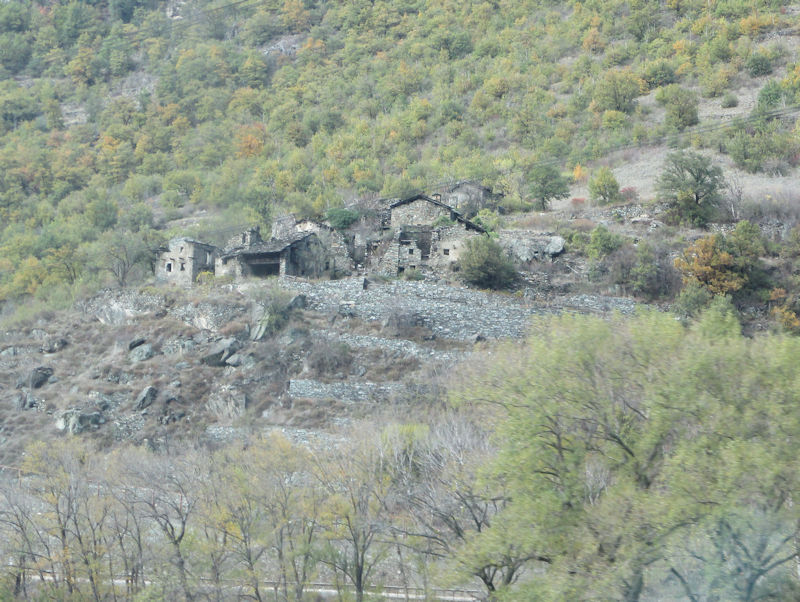
An ex-village on the hillside
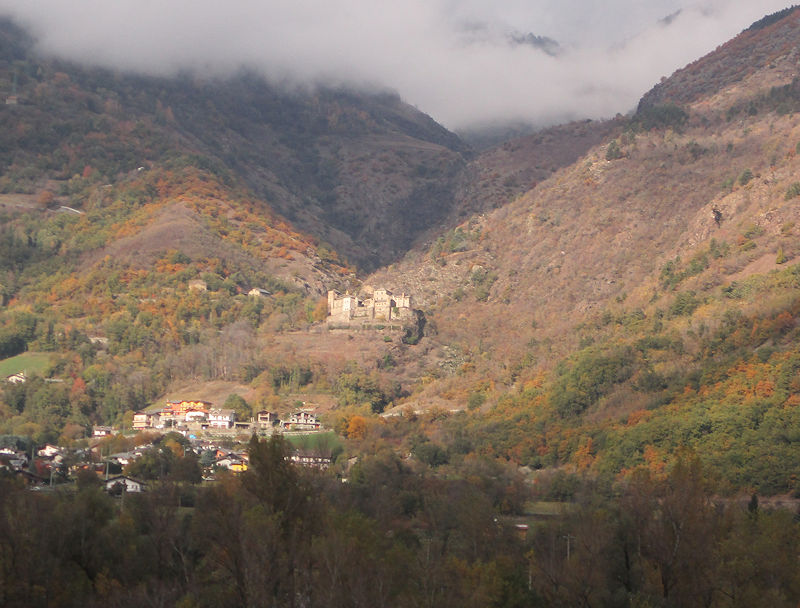
As the autostrada approaches the interesting small city of Aosta, it continues straight on up the valley to Courmayeur and enters the Mont Blanc tunnel to Chamonix on the far side in France -- we leave the highway, however, and enter a new tunnel on the SS27 two-lane road northward above Aosta towards the Grand St-Bernard Pass and Tunnel.
That thing, 5km east of Aosta city, is the Château de Quart, built starting from 1185 by Jacques de la Porte de Saint-Ours, founder of the Lords of Quart. The upper Val d'Aosta is traditionally more comfortable with French than with Italian, hence the castle's common name.
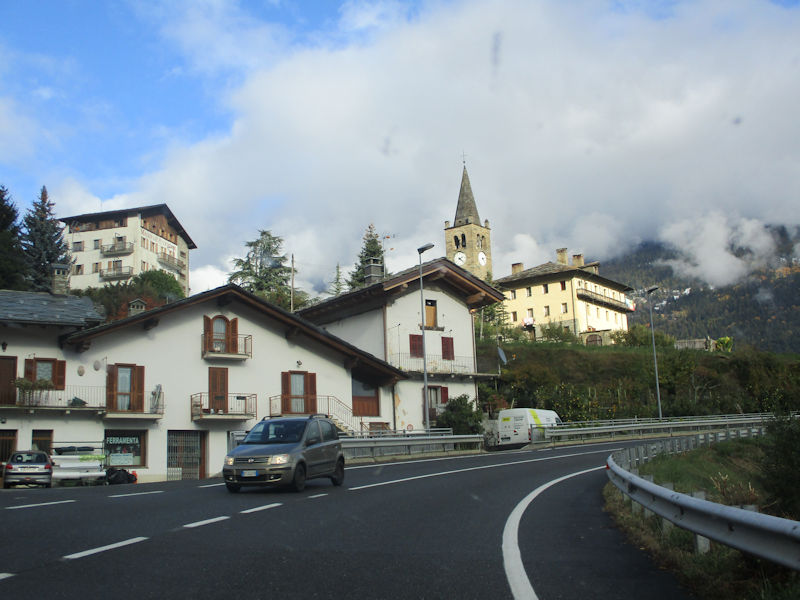
Up the hill through Gignod (988m)
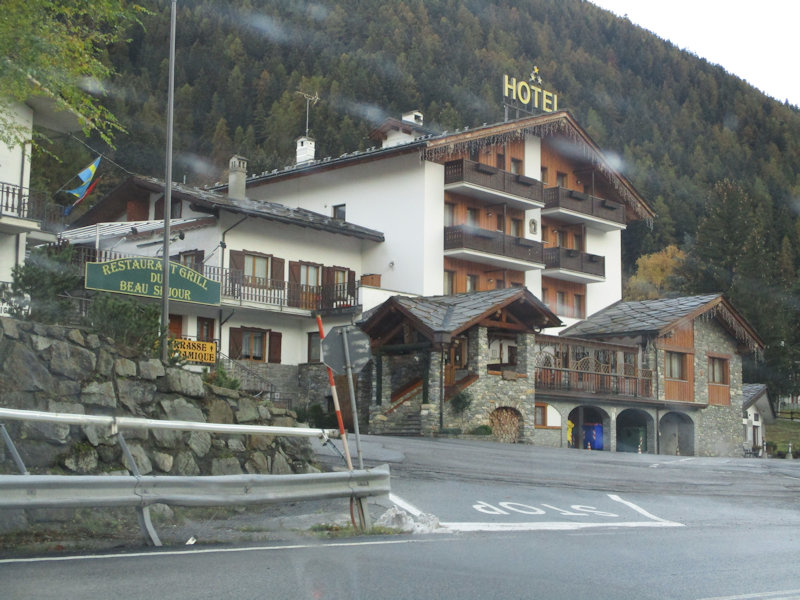
The Restaurant Grill du Beau Sejour in Étroubles, quite far up the SS27, the 'Strada Statale del Gran San Bernardo'

The tiny town of St-Oyen, with its permanently unfinished 4km tunnel meant to bypass this town and Étroubles, for the trucks especially, apparently mired in corruption and incompetence for a long time. It was commenced in 2011, but we've been passing through here frequently and have seen neither progress nor any sign of work on it.
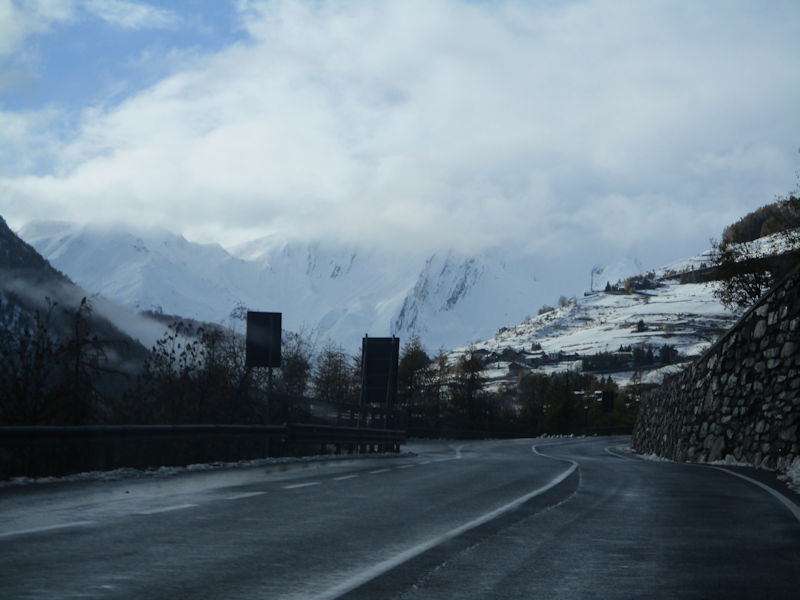
Part of the Mont Blanc massif ahead

The highest village on the Italian side, Saint-Rhémy-en-Bosses (1519m asl) [the 400 citizens are allegedly called Saint-rhémiards]. Here the road to the tunnel bifurcates from the road over the Grand St-Bernard Pass, which is only snowfree in mid-summer and early fall.
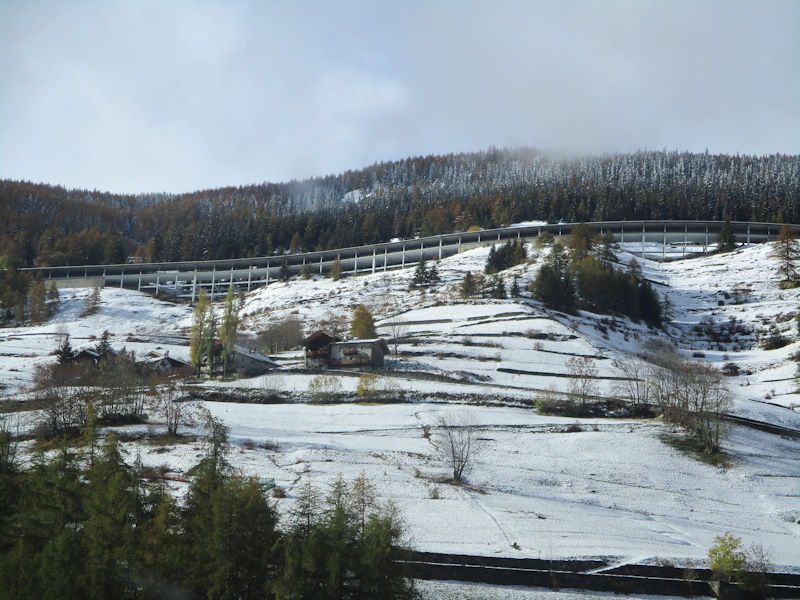
Anti-avalanche barriers above us, as the road takes a giant switch back towards the pass
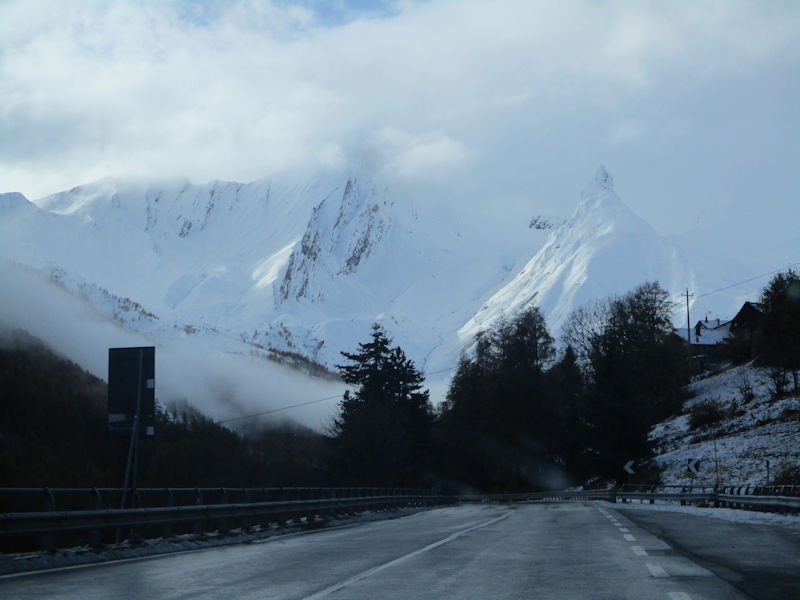
Farther up the hill

Closer to the gallery above

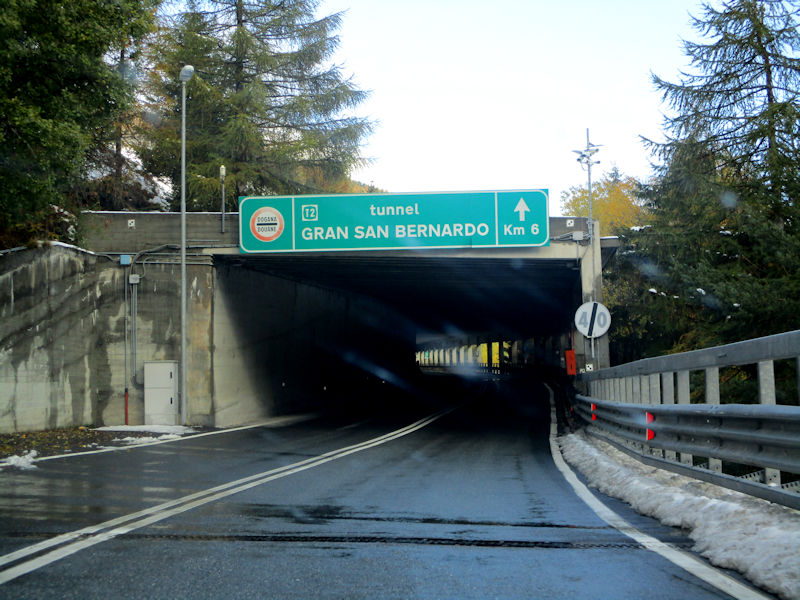
Entering the galleries
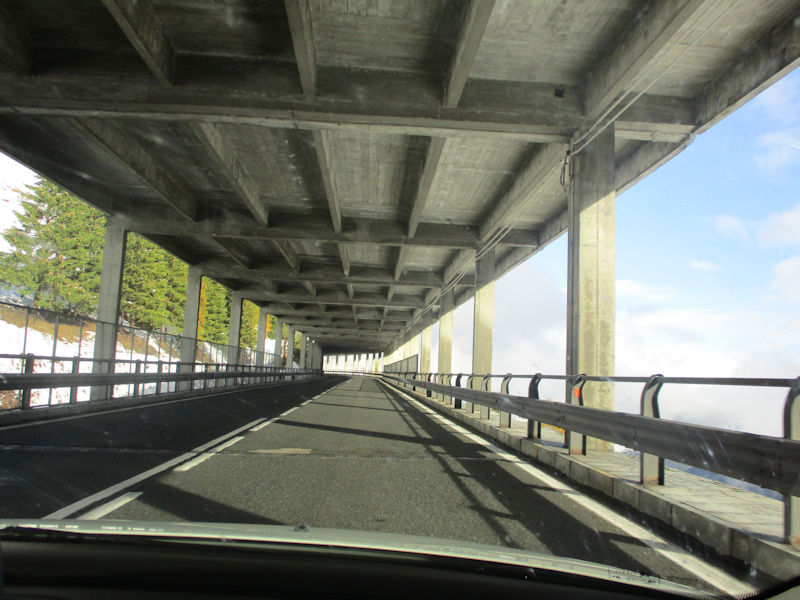
Anti-avalanche in some parts, but also generally helpful in reducing the need for snowplowing to keep the road open


Pulling into the Douane or Dogana or Customs, preparing in perfectly good faith to declare our carload of Grignolino wine from Lu

Into the Tunnel du Grand-Saint-Bernard, completed in 1964, about 6km long (at that time the longest road tunnel in the world, or so we're told), at about 1900m altitude. There's a semi-hefty toll on it, but with a ten-trip pass for the year it depreciates really quickly. (There are also bargains sometimes on offer, like a free one-way if you're round-tripping down to Aosta for a holiday.)
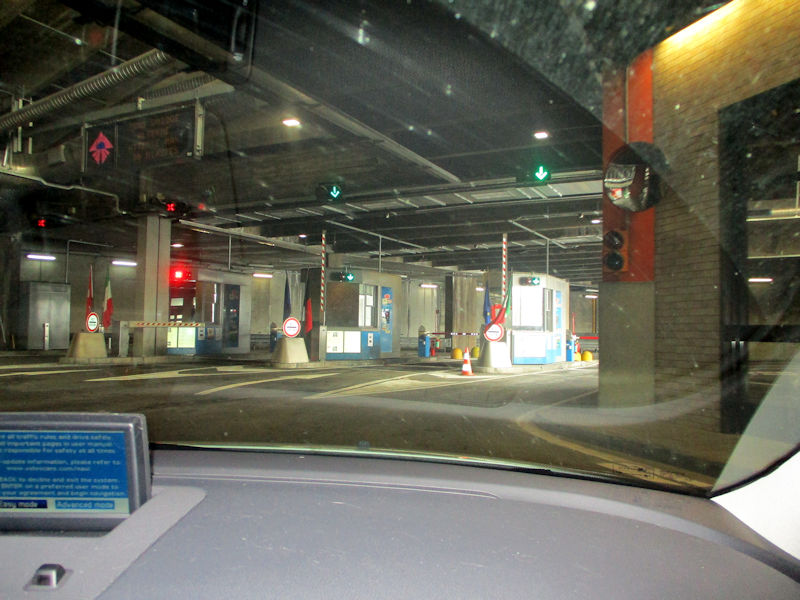
It looks like we're going to have quite a few trips left on our pass, unfortunately, as this may turn out to be our last trip. We'll pass it on to Leonard, who's purchasing our car.

Melvin the Doge slept through the tunnel but perked up when we emerged into the galleries on the Swiss side.
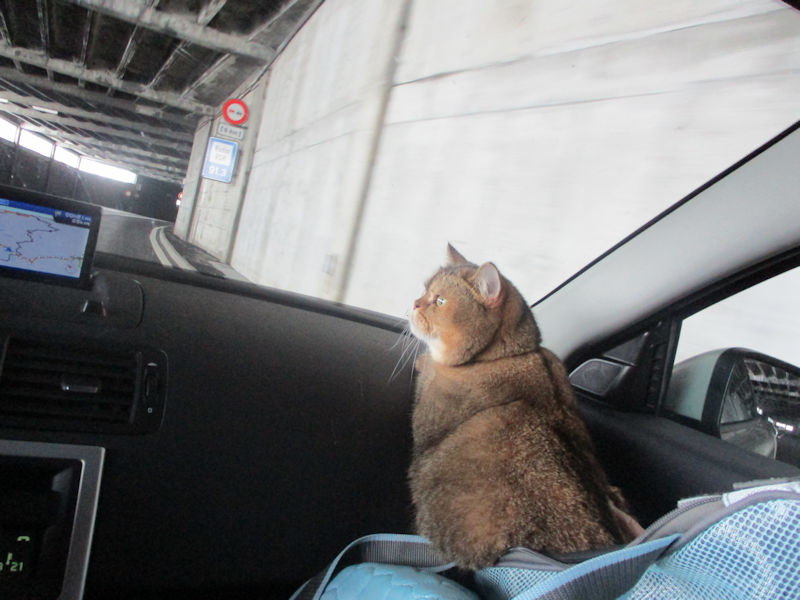
We trust that curiosity doesn't really kill the cat, but it does help him to occupy his little mind on a long drive.

In fact, on this trip it kept his little mind occupied for the 35km or so down to Martigny in the valley of the Rhône.

A traffic light for some maintenance works

Out of the galleries near Bourg St-Pierre, passing the Joe Bar

And in the same sort-of-town, the Hôtel Restaurant du Crêt ('Hotel restaurant serving Swiss Alpine dishes in a cozy, lodgelike dining room with wooden beams')

Down the hill towards Orsières in the Val d'Entremont district in the Swiss canton of Valais

Looks like Melvin's finally dozed off.
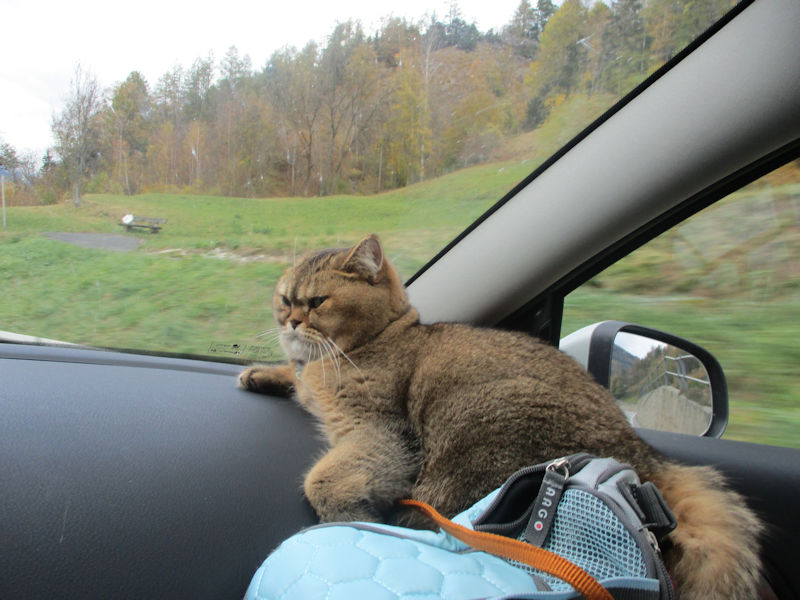
Nope.
Melvin's permanent scowl disguises a submerged merry personality.

Past Sembrancher (below Verbier) on the road out to Martigny
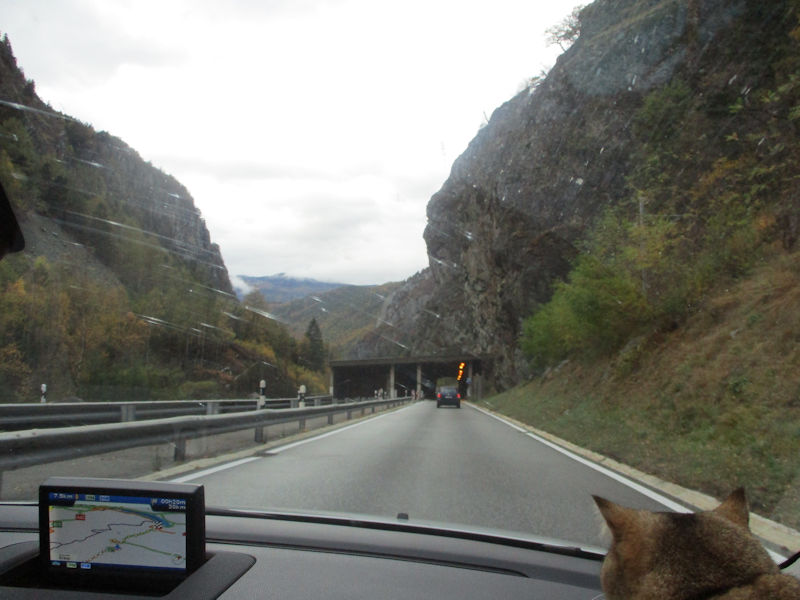
Through the odd rockfall gallery
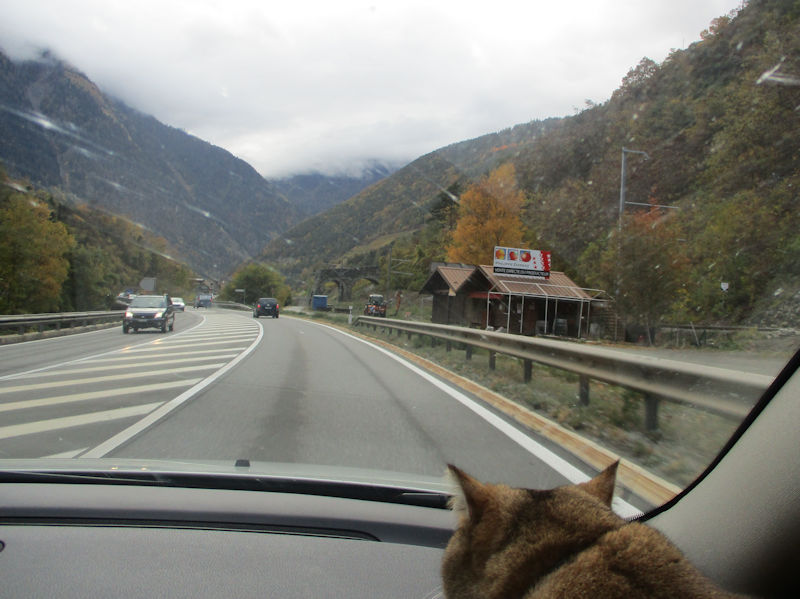
And past the odd fruit and vegetable stand (presently out of season)

Past little Bovernier
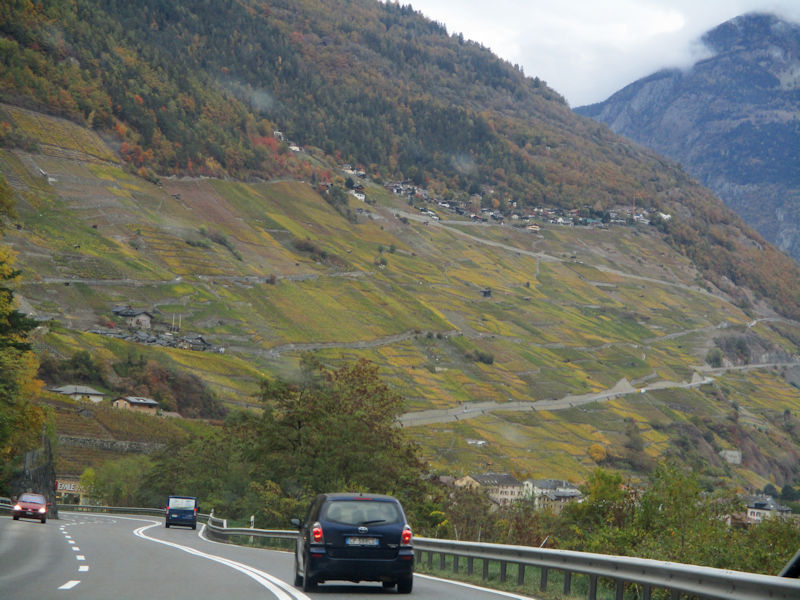
On the far side, that's the road up over the Col de la Forclaz and down to Chamonix in France -- presently closed because of landslides near the col.

The outskirts of Martigny (known as Octodurus to the Romans), home to 18,000 'Martignerains' and to the Fondation Pierre Gianadda, a high-class museum and venue for exhibitions of the works of well-known artists

The bypass tunnel under Martigny

And home to Ollon, on another grey day
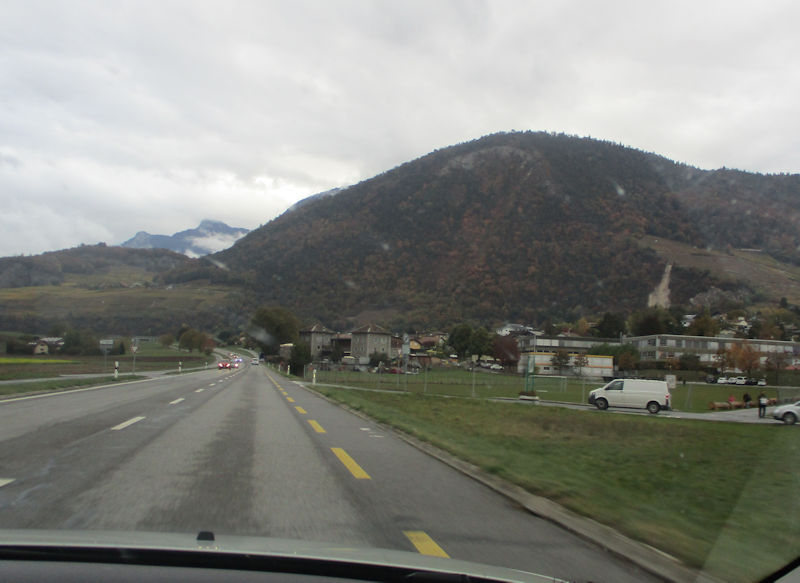
Round to our road, under the recent landslide on the right

And up the Rue du Carroz to home

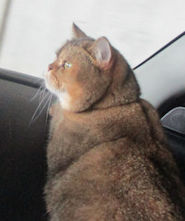 Dwight Peck's personal website
Dwight Peck's personal website








